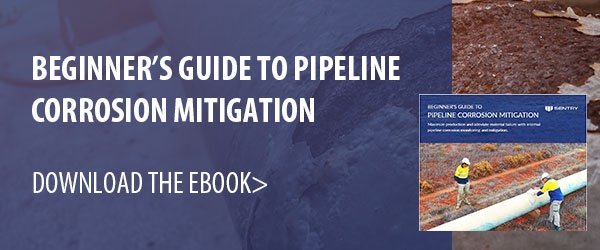
Paraffin deposition is one of the most challenging flow issues in oil production processes. Paraffin buildup in pipelines, wells and vessels is the most common type of paraffin deposition and can contribute to pipeline corrosion. Managing paraffin deposition in a timely and cost-effective manner are the keys to maximizing oil production, performance and profit.
What is Paraffin?
Composed of straight-chain saturated hydrocarbons, paraffin is one of the important components in crude oil. But it can often precipitate on pipelines and wells as a result of changing temperatures and pressures within the production system. When paraffins build up, these wax-like substances can restrict oil production.
As petroleum is transported, the paraffin dissolved in the crude oil will crystallize and precipitate after a decrease in temperature and/or pressure. It then is adsorbed and deposited onto the inner wall of the pipeline or equipment. This leads to a reduction in flow or even a blockage, which can increase the flow resistance and pump loads and reduce the service life of equipment.
These deposits, found in areas next to a producing well’s bore, bore face, tubing string and pump, can also occur as oil cools when it flows from the high-pressure reservoir into the wellbore to the surface.
Effects of Paraffin Deposits
Paraffin deposition is a severe global problem during crude oil production and transportation. The buildup of paraffin is widespread in oil fields all over the world, and is responsible for reducing efficiency, increasing financial losses and damaging equipment. In severe cases of deposition, production must be stopped to remove paraffin from the pipelines or well tubing.
Paraffin deposition is also a common contributor to pipeline corrosion, which was the second-leading cause of significant onshore and offshore incidents between 1986-2013.
Paraffin mitigation procedures vary by region, as the makeup of the crude oil and temperatures affect both deposition rates and treatment choices. For example, northern states generally need to prepare for paraffin deposition during the winter months more than southern states due to colder ambient temperatures.
How to Mitigate Paraffin Deposition
Common mitigation methods help prevent deposition and treat wax that has already been deposited in a well or pipeline. Some midstream operators prefer to prevent wax deposition, as treating a pipeline for paraffin buildup can be particularly challenging when the affected area is difficult to reach. Knowing when to implement both methods is critical to maintaining an efficient midstream process.
Paraffin Inhibitor – A paraffin inhibitor is a chemical injected into the pipeline or wellbore to prevent or minimize paraffin deposition. The effectiveness of paraffin inhibitors is strongly dependent on crude oil composition. Paraffin inhibitors must be introduced into the oil before the oil cools to its cloud point.
Paraffin Solvents –These are used to break up depositions that have already starting forming on the walls of the pipe or in the bottoms of the vessels. Installing and utilizing the correct chemical injection equipment and injecting into the optimal location are critical when mitigating via chemical means. Proper dispersion of the mitigating chemical reduces the cost and increases the effectiveness of this method.
Pigging – This method is used in midstream operations to clean out paraffin deposits periodically. Scraper or brush pigs are used in conjunction with pressure/chemical to clean the lines.
Hot Oiling – Specialized trucks superheat water or oil and pump it into the lines. The heat breaks down and dissolves the deposits, allowing the lines to flow freely. This method is used frequently on well heads and also to circulate in storage vessels where deposition has occurred.
Ultrasonic Waves – Ultrasonic waves can break the carbon chain structure of paraffin molecules, which can prevent paraffin deposition and reduce viscosity. In recent years, ultrasonic treatment techniques have attracted more attention in the midstream industry because of its low cost and pollution-free format.
Additionally, experiments using high-intensity acoustic sources to remove organic deposits, including paraffins, have shown that the mechanical agitation provided by the acoustic waves effectively resuspends the paraffin and restores the effective permeability of the core to oil to its undamaged condition in a relatively short period of time. The depth of treatment is approximately 12 centimeters to 15 centimeters.
Don’t let paraffins block your flow. Sentry carries an extensive selection of corrosion monitoring and mitigation products and has over 30 years of service experience. Explore your options for upstream/midstream corrosion monitoring and chemical optimization solutions.




